How to Hitchhike Around the World – Top 19 Tips & Tricks
Learning how to hitchhike is the best thing I’ve ever done. Hitchhiking has given me the freedom to travel anywhere with no restrictions while meeting some of the best people the world has to offer.
I’ve hitchhiked thousands of miles and whenever I’m not out there waiting for the adventure to roll up, you can find me dreaming about the day I can stick my thumb out and ride that next wave of freedom.


1. Have the Right Mindset
The most important thing when hitchhiking is to have the right mindset. Mentally, hitchhiking is one of the hardest things I’ve ever done. When you’ve been waiting for a ride for a while and people are passing you by flipping you off, it’ll get to you. Then once you get offered a ride, if you don’t have the right mindset, you might find yourself taking an unsafe ride.
In addition to dealing with the people, you’ll have to deal with the weather and the location where you get dropped off at. Getting dropped off in a middle of a thunderstorm or desert without anything nearby can really mess with you if you’re not prepared.

I find that the better mood that you’re in, the quicker your next ride comes. Drivers like to pick people up that are smiling and happy. Think about it, would you rather pick somebody up that looks happy or sad?
Being in a good mood also helps your day go by faster which is especially useful when you’re waiting for that ride that’s taking longer than normal. Just try to be present and love the beautiful and unique situation you’re in.
2. Choose the Right Ride
You can always say no to a ride. I say no to a ride if the person picking me up seems high, drunk, or dangerous. I’ll also say no if there are a lot of guys in the vehicle or the vehicle itself doesn’t seem safe. It’s always best to say no if you’re even a little unsure.
When somebody pulls over to offer a ride I’ll try to gauge their hesitancy. If someone seems really pushy to give you a ride, it might be better to get a different ride.
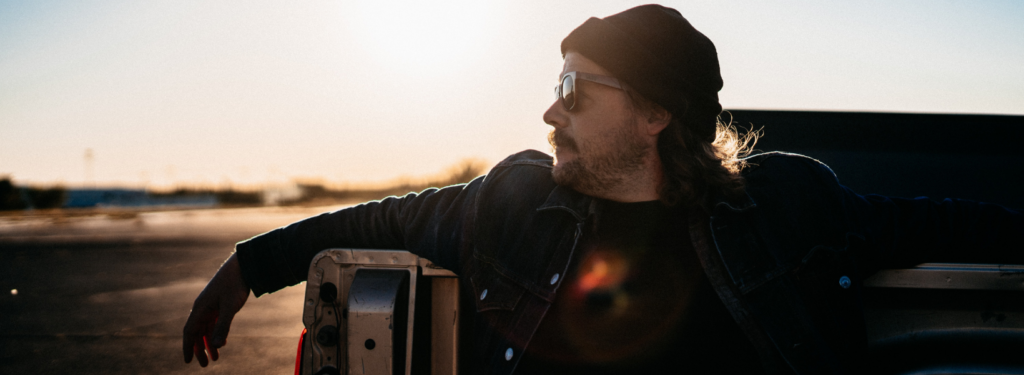
Asking where they’re going is also important. You want to make sure they’re going in the right direction and aren’t going to drop you off in a spot worst than the place you’re currently at. I also tend not to get a ride if it’s less than 30 mins unless I’ve been stuck in a spot for a while.
3. Wear the Right Clothes
Wearing the right clothes will help you get picked up faster. You don’t want to look like you smell or attract drivers with the wrong intentions.
Guys should shave and have a clean look. Women should try not to wear clothes that are too provocative. Wearing brighter clothes also tends to help people see you better and will lead them to think that you’re a good person to pick up.
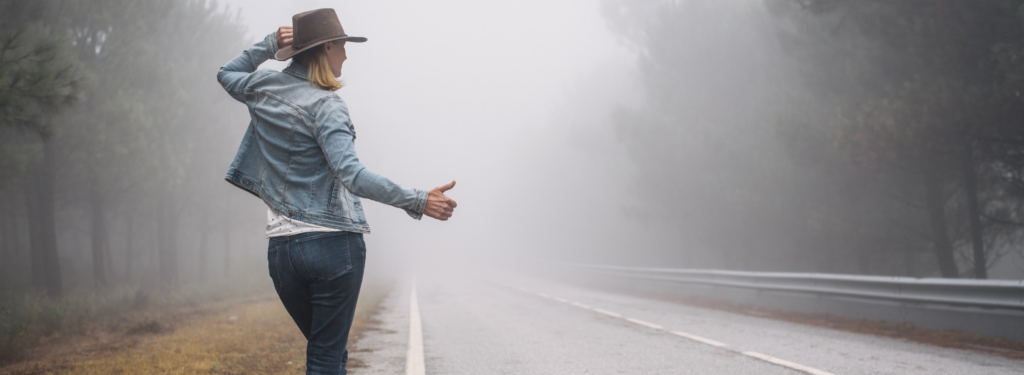
4. Be in the Right Spot
Highway on-ramps are the go-to spot for hitchhiking, especially since walking on the highway tends to be illegal in most places.
If the on-ramp doesn’t have a good spot for people to pull over or you’re not getting a ride, it might make sense to ask people directly at a nearby gas station or you might even have to walk a mile or two to get to the next on-ramp.
On-ramps at the edge of town are usually better than ones in the center because people are more likely to be going far instead of just staying in town.
5. Have a Good Backpack
Having a good backpack that can carry all your stuff and that has an internal frame is essential. It should be the first thing you buy when learning how to hitchhike.
If I know I’ll be camping a lot and maybe train hopping, I’ll go for my Mardintop 60L backpack. It’s durable, has molle compatibility so I can strap my first aid kit and other stuff to the outside, and is big enough to hold all of my hitchhiking gear.
If I plan on buying a plane, train, or bus ticket at any point like when I’m in another country, I opt for my Osprey Farpoint Trek 75L backpack. It works with my detachable daypack for when you don’t want to carry all your gear the entire day and it’s big enough for all of my stuff.
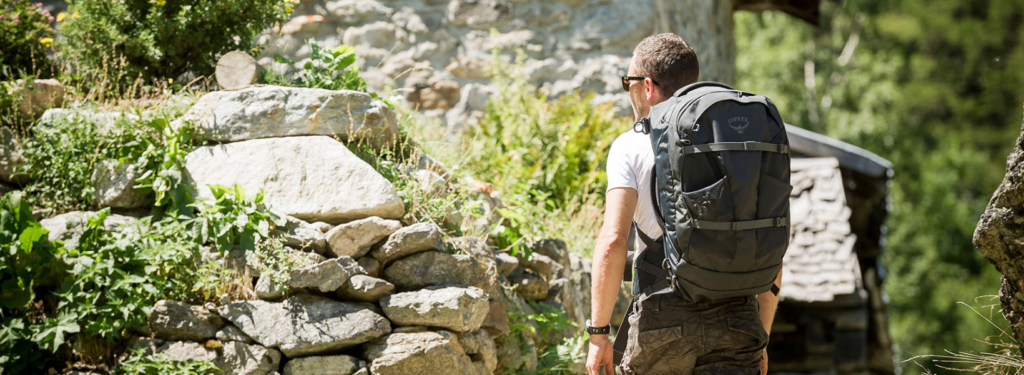
6. Be Prepared for Any Climate
When you’re hitchhiking you’re most likely going to be traveling through multiple climate zones and you’re going to be at the will of whatever weather you run into.
Don’t forget to bring sunscreen, mosquito repellent, a jacket, and a poncho.
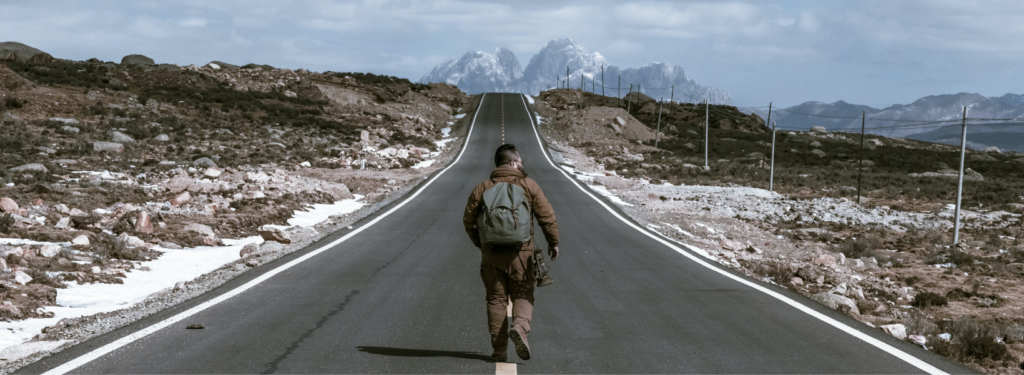
7. Get to Know Your Driver
During your rides, get to know your driver! I’ve been given rides by the most interesting people and have heard some of their deepest thoughts and feelings. People giving you a ride are in a unique predicament as they have a chance to speak to someone who they’ll likely never see again.
If you’re someone who has a hard time thinking of stuff to talk about, like I do sometimes, using the F.O.R.D.S. technique is very useful. F.O.R.D.S. stands for Family, Occupation, Recreation, Dreams, Secrets. Start with asking about their family and ask deeper questions about the things they tell you about their family.
Then ask about their job, what they do for fun, and then after they’ve spoken about all those things they’ll feel comfortable enough to talk about deeper things like their dreams and maybe even some secrets they wouldn’t tell anyone else.
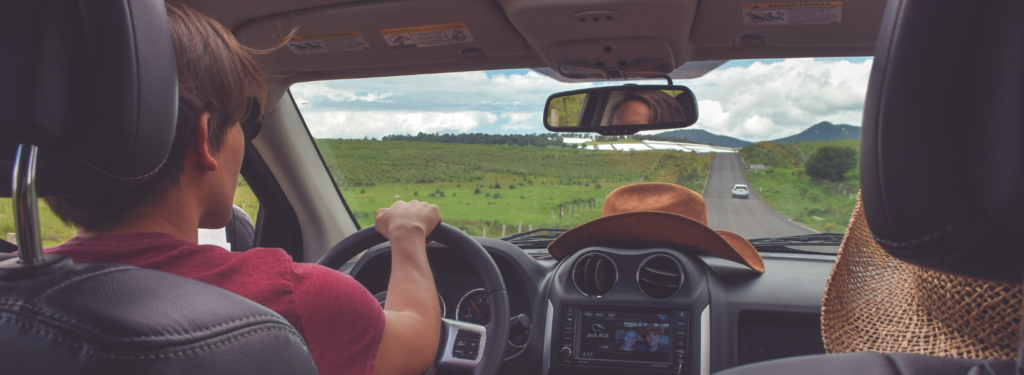
After you get to know your driver on such a deep level there’s a high likelihood they invite you over for a meal, a place for you to sleep, or even offer to bring you on an adventure.
8. Find a Good Place to Sleep
You’re not always going to be able to stay in a hotel or hostel. You might find yourself in the middle of nowhere, needing to stealth camp somewhere. Finding a good place to sleep can really make or break your journey.
One of the best ways for a place to stealth camp is to use the satellite view on Google Maps to pinpoint where the closest wooded area is.
Another good place to look for a place to sleep is in the center of highways and their on-ramps. There’s usually a patch of woods or bushes that nobody will go looking in.
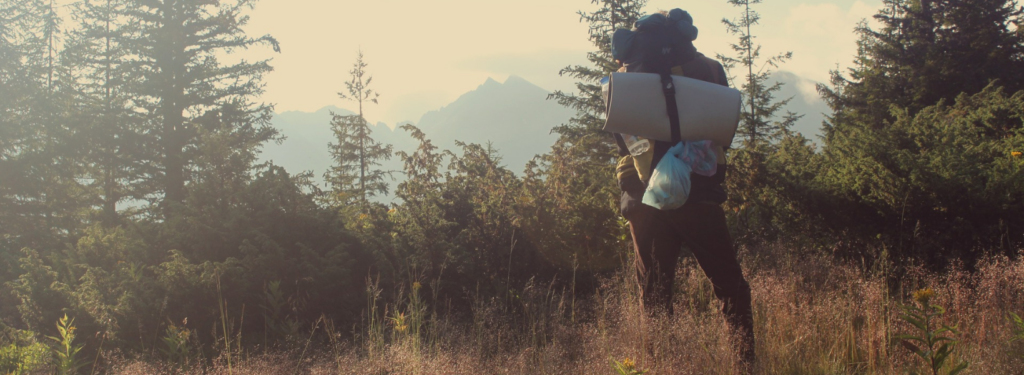
9. Bring a Good Sleep System
You’re not always going to be able to sleep in a nice hotel every night, especially if you’re planning on going a far distance. Having a way to get a good night’s sleep anywhere you are is crucial if you don’t want to suffer. This is one of the biggest mistakes I see people make when learning how to hitchhike.
I always bring my military bivy bag, a military patrol sleeping bag, and an inflatable sleeping pad. It’s small enough to fit in my backpack and it’s versatile enough to set up anywhere.
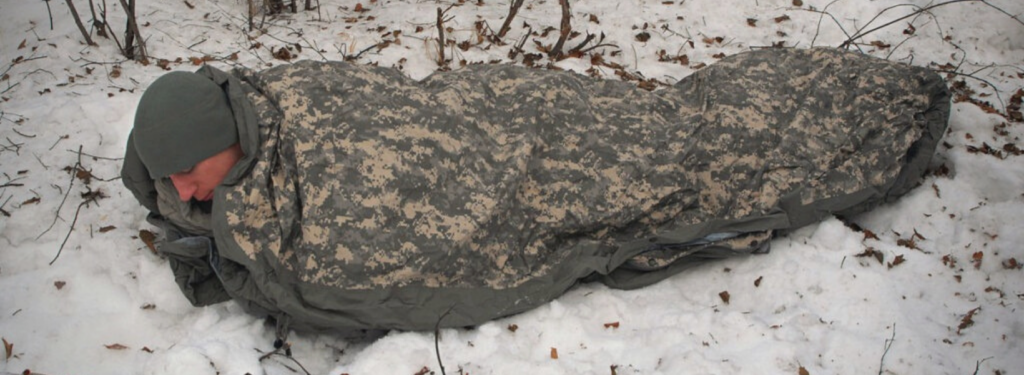
10. Know Where You’re Going
Keep an atlas with you and know where you want to go and where you don’t want to go. I find it’s best to be dropped off on the outskirts of a town near a truck stop. People stopping are more likely to be going far and you have access to the truck stop for food and water.
You’ll also want to know the names of the highways and the cities in the direction you’re going so you’re not at the will of your driver and you don’t end up taking the wrong ride.
11. Know the Local Laws
If you’re in the United States, you can check my post on hitchhiking laws where I’ve listed every hitchhiking law I could find. I made this list after I found out that a lot of online resources are outdated when it comes to hitchhiking laws.
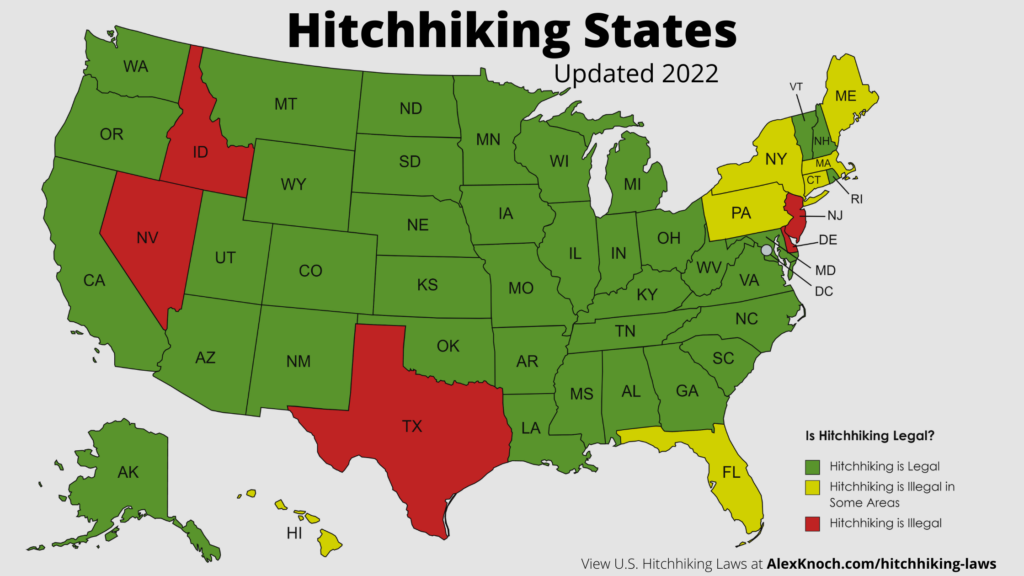
12. Be Prepared to Wait
The longest I’ve ever waited for a ride was a day and a half in Lincoln, Nebraska. If you’re just sitting there with nothing to do or to keep yourself occupied, you’re going to suffer and you’ll start hating hitchhiking.
For me, the wait is one of the best parts of hitchhiking. You get to be out in nature and just witness the world going by.
For others, having some music, a podcast, or an audiobook to listen to can be very helpful.
13. Use a Cardboard Sign
Using a cardboard sign helps you get noticed and if there’s a junction ahead, you’ll attract the right cars to pull over.
I usually write down the direction I’m going, like “West” or “North”, if I’m going a far direction but if I’m going somewhere nearby, I’ll write the city name so I can try and get a ride all the way there.
I’ve even written “Next Exit” when I just needed to get one exit down or the current spot isn’t working very well.
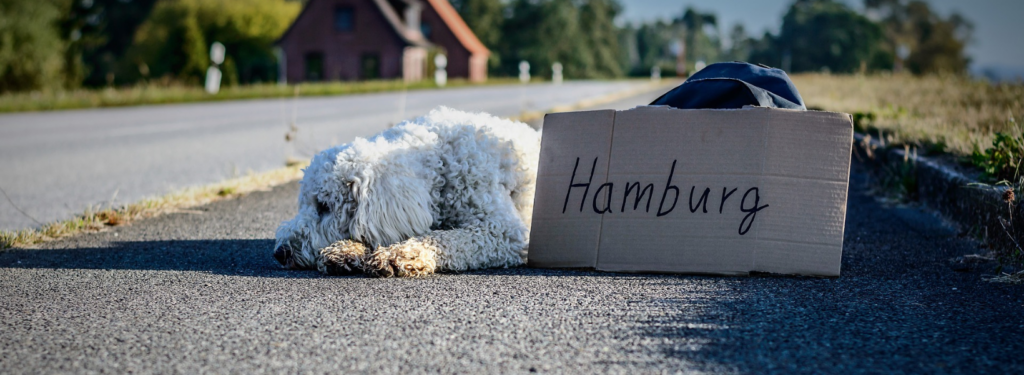
14. Bring Extra Water
The worst time I’ve had while hitchhiking was when I was in Utah stuck in the middle of the desert with no access to any water. The closest town was 40 miles away and there was nothing I could do but hope that a car would pick me up soon.
Thankfully a couple of Christians picked me up and had some spare water they were more than willing to share before dropping me off in Nevada.
Ever since then, I carry two 1.5 liter water bottles and a water bladder that I fill up at every opportunity. I also carry a Sawyer Squeeze with me so I can fill up my water bottles from any lake, river, or water source I can find.
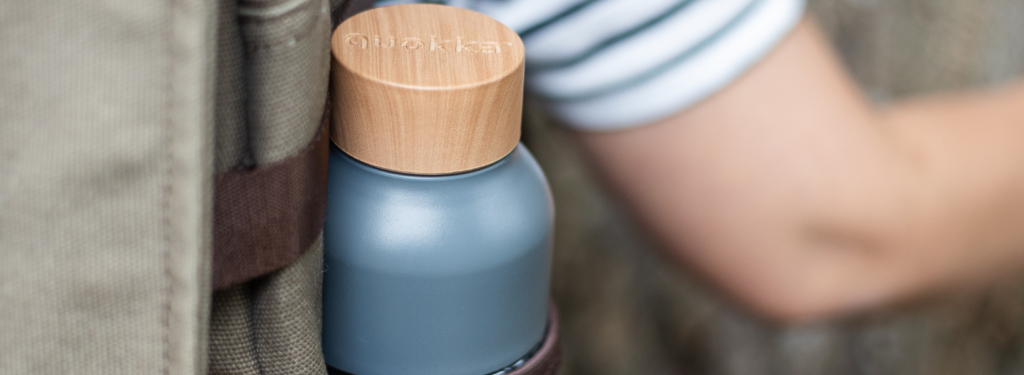
15. Hitchhike With Others
One downside to hitchhiking is how lonely it can be. Sure, finding a ride is going to be a little more difficult, but the good times definitely make up for it. The waits won’t seem as long and you’ll have someone to watch your back when you get into those sketchy situations.
The best people to hitchhike with, I’ve found, are the ones you meet along the way that are also traveling and these people will teach you how to hitchhike. You do have to watch out for addicts and some dirty kids tho as they’ll likely end up trying to take advantage of you, at least that’s been my experience.

16. Keep Track Of Your Stuff
Before exiting the vehicle, make sure you have all of your gear. Have a checklist in your head for the most important things. I always check for my phone, camera, and wallet before I get out.
If you have to grab your backpack from the backseat or trunk, make sure you remind the driver before you get out so they can unlock it for you and so they don’t forget and just drive off.
When I’m in a busy city or somewhere I’m walking through a lot of people I like to put my rain cover on my backpack to help protect against thieves and pickpockets.
17. Be Open, Explore, and Go On Mini-Adventures
You’re going to end up in places you’ve never been and you’ll meet some people that you never thought you would meet. Take advantage of these opportunities and be open to exploring and going on mini-adventures along the way.
When getting rides I often get invited to their house for dinner or to take a detour to see something cool. Use your best judgment but those invitations have turned into some of the best times of my life.
When stuck in a city, take advantage and explore it. I’ve stumbled upon Sacajawea’s gravesite, the place Jesse James robbed his first train, and old indigenous ruins simply because I was stuck and bored in a city.

18. Stay Aware and Use Common Sense
When hitchhiking, you often put yourself in precarious situations: meeting strangers, sleeping in strange places, and standing on the side of highways. Always use common sense and go with your gut if you feel like a situation can end up unsafe for any reason.
If you feel like the situation is getting unsafe, a good strategy is to pretend like you’re going to throw up. Don’t hitchhike at night. And don’t tell people the exact location where you plan on sleeping.
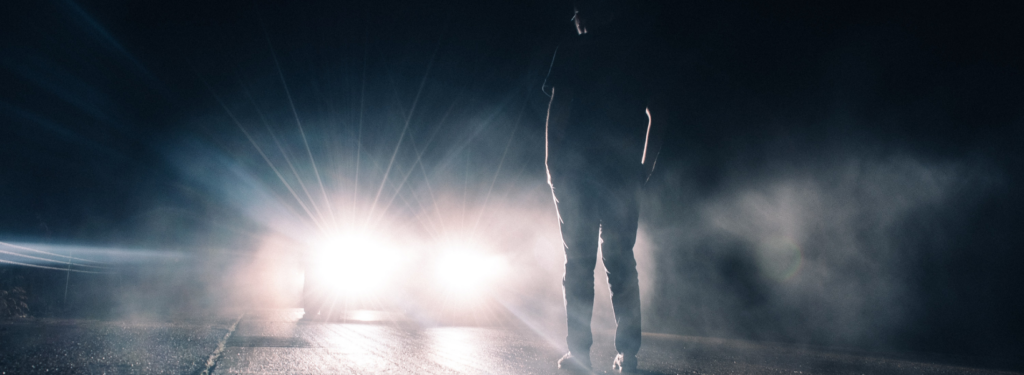
19. Bring a Towel
According to the Hitchhiker’s Guide to the Galaxy, a towel is just about the most massively useful thing an interstellar hitchhiker can carry. Partly because it has great practical value.
- You can wrap it around you for warmth as you bound across the cold moons of Jaglan Beta;
- you can lie on it on the brilliant marble-sanded beaches of Santraginus V, inhaling the heady sea vapors;
- you can sleep under it beneath the stars which shine so redly on the desert world of Kakrafoon;
- use it to sail a mini raft down the slow heavy River Moth;
- wet it for use in hand-to-hand combat;
- wrap it around your head to ward off noxious fumes or avoid the gaze of the Ravenous Bugblatter Beast of Traal (a mind-bogglingly stupid animal, it assumes that if you can’t see it, it can’t see you — daft as a brush, but very very ravenous);
- you can wave your towel in emergencies as a distress signal and of course,
- you can dry yourself off with it if it still seems to be clean enough.

More importantly, a towel has immense psychological value. For some reason, if a strag discovers that a hitchhiker has his towel with him, he will automatically assume that he is also in possession of a toothbrush, washcloth, soap, tin of biscuits, flask, compass, map, ball of string, gnat spray, wet-weather gear, spacesuit, etc., etc.
Now that you know how to hitchhike, get out there and do it! It may seem scary at first but you’ll soon love it. If you have any questions on how to hitchhike, please let me know in the comment section below.
- What to Wear in Cancun by Month & Activity (And Not!) - March 13, 2023
- What to Wear in New York by Month & Activity (And Not!) - March 13, 2023
- What to Wear in Morocco by Month & Activity (And Not!) - March 13, 2023

